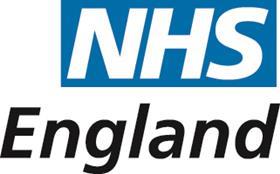Population health management is causing us to change the way we work so that we intervene at a point at which we can influence what happens to people, writes Amanda Doyle
Sponsored by
A lot of people think that Population Health Management is all about data – crunching it, monitoring it and governing it. Yet that’s only part of the equation. What the data illuminates is where the real focus should be.
From helping to pinpoint people at risk of ill health, to predicting those in danger of exacerbating, to preventing ill health altogether, population health management provides a way of bringing together various sources of intelligence to systematically deliver personalised care.
What it’s really about is using data-driven insights to make intelligent decisions about how to deliver care differently. Data may be the jump-off point, but it’s by no means the whole story.
Put resources to best use
In Lancashire and South Cumbria, where inequalities in health are particularly stark, it’s helping us to get under the skin of the causes of ill health and how we can use our resources to best effect.
Population health management is not the whole answer to improving health and wellbeing, but it is a crucial piece of the puzzle, one that is helping us to influence the wider determinants of health
In neighbourhoods in Blackpool, for example, we’ve been paying close attention to what’s been driving high demand on GP services and attendances at accident and emergency. We’ve found, in one neighbourhood, by cross referencing the housing department information, that almost 10 per cent of the GPs’ list were living in poor quality HMOs, sharing, often dilapidated kitchen and bathroom facilities.
This type of accommodation is proving to be a major driver of poor physical and mental health. Neighbourhood teams – including GPs in Primary Care Networks, mental health workers, community and social services, public health, and the voluntary sector – with support from fire and police services, are now developing targeted interventions to get ahead of the curve.
We’ve been able to move forward more quickly in some neighbourhoods as part of a 20-week national accelerator programme on population health management development. Backed by funding from NHS England, we have been exploring how data and intelligence can be used by GPs and community services to help people live longer, healthier lives.
This has seen a programme of work started in Barrow, where we’re delving into the data to understand how we can better support patients with severe and enduring mental illness. Having found that 40 per cent are living with a long-term condition, such as COPD or musculoskeletal conditions, we have begun to target physical health checks at this cohort.
Proactive support
The data that we already hold between us, can, if we interrogate it properly, tell us which people in our community are most at risk of having or developing mental health problems. We can use this to target proactive support at those at highest risk to reduce the likelihood of problems spiralling out of control – it’s much easier to treat depression, anxiety or addiction before it has led to family breakdown, debt, or homelessness than after.
In Chorley and Burnley, we’re looking at how we can support the management of moderately frail patients in the community. In Chorley the Primary Care Network used the district council’s assisted bin list to identify a cohort of frail patients and to target interventions – not being able to put your bins out is a practical, real life measure of frailty and isolation.
By taking a population health management approach, we’re adopting new ways to improve outcomes, reduce inequalities and address the broad range of individual, social and economic factors affecting the health of local people.
We have also developed a single shared record our multidisciplinary teams can read and write into to enable them to view patient pathways, and see, in real time, our highest risk patients.
Rather than simply using data to look back at trends, performance manage or provide assurance, we’re taking everything we know about people and groups of people to make clinical decisions and, with partners, to improve health and wellbeing in neighbourhoods and places. In doing so, we’re working with a wide range of professionals, care providers, voluntary and faith groups, and community members to design targeted programmes of care.
Population health management is not the whole answer to improving health and wellbeing, but it is a crucial piece of the puzzle, one that is helping us to influence the wider determinants of health. Crucially, it’s causing us to change the way we work so that we intervene at a point at which we can influence, for the better, what happens to people.
We continue to face huge challenges across our system, but if we hold our nerve and let our Primary Care Networks and neighbourhood teams continue to develop this approach without expecting instant results we will start to moderate demand on hospital services and we hope, see the benefit in a healthier, more resilient community.



























